National Guardsmen sleep on Capitol building floors amid threats of violence
As the threat of violence ramps up in America, shocking images from the hallways of the Capitol building show just how much is at stake.
As the threat of violence ramps up in America again, hundreds of exhausted National Guard troops have been forced to sleep on the cold marble floor of the Capitol building.
Incredible images show politicians practically stepping over the troops clinging to their rifles in the hallways of the heart of the US government.
Sleeping in almost any spot they can find, some are forced to use stairs as a makeshift pillow to get some rest as they ready for a potential insurgence in the run-up to President-elect Joe Biden’s inauguration next Wednesday.
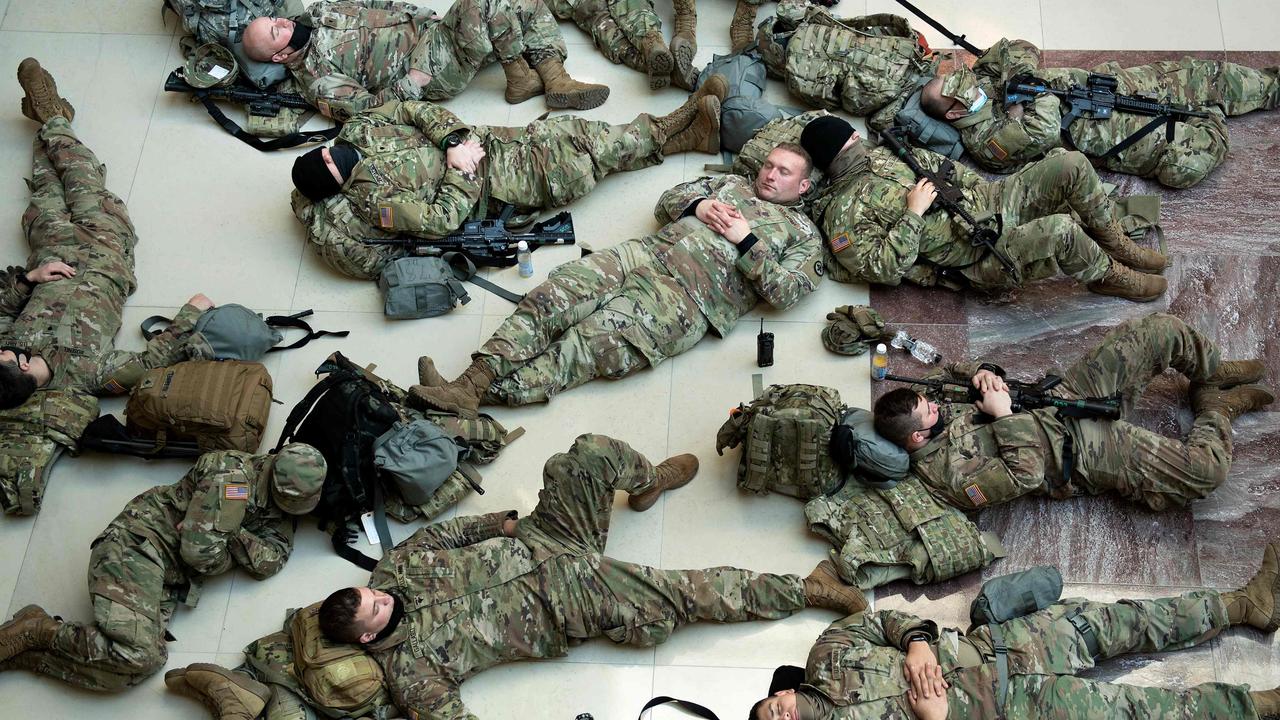
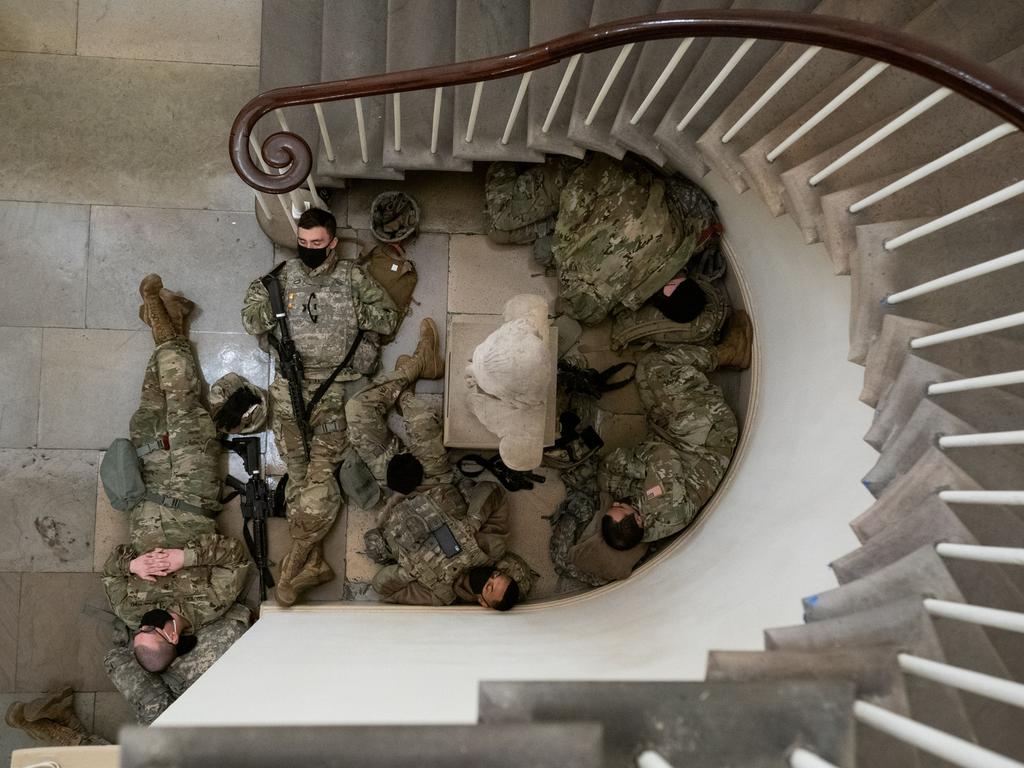
They show the National Guard members in the same areas of the building overrun by rioters last Wednesday — a day when the heart of the US government was severely compromised.
Because of the impeachment proceedings today, there are fears violence could flare up again.
In a bid to stop a repeat of last week’s scenes, some 20,000 guardsmen are being deployed to Washington, DC, by the weekend. That’s more than triple the amount of troops on the ground in Iraq and Afghanistan combined.
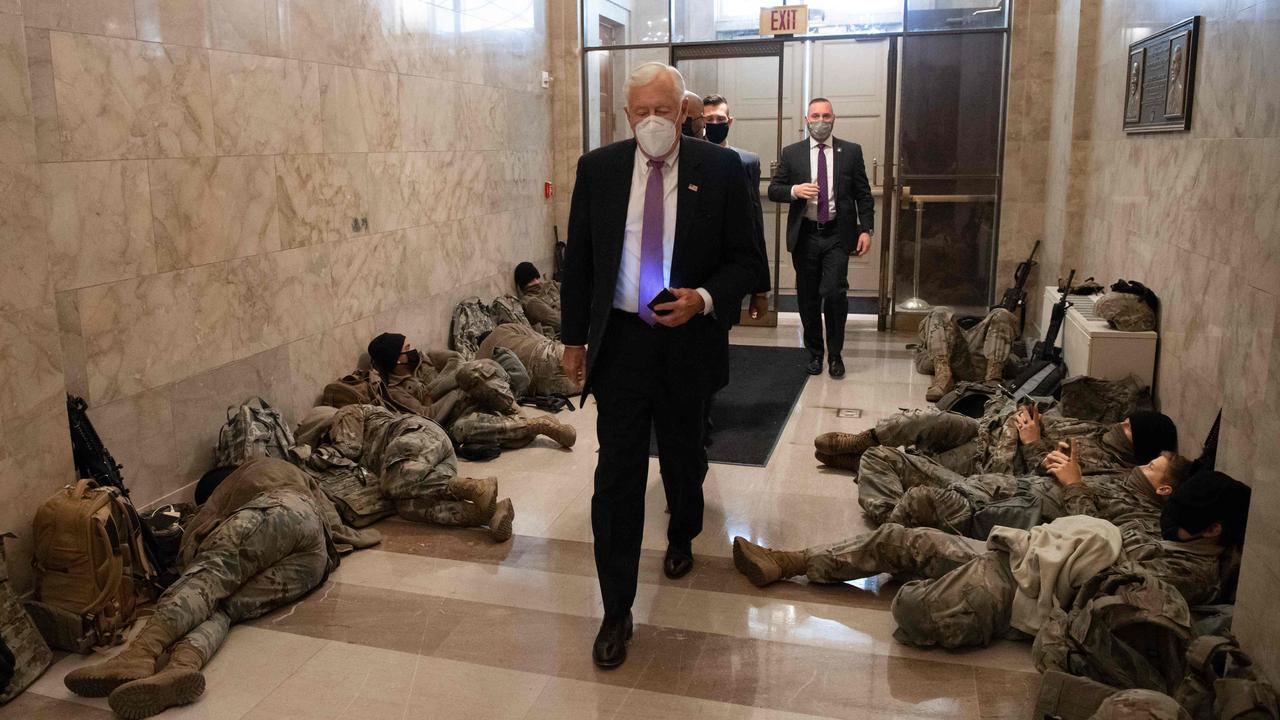
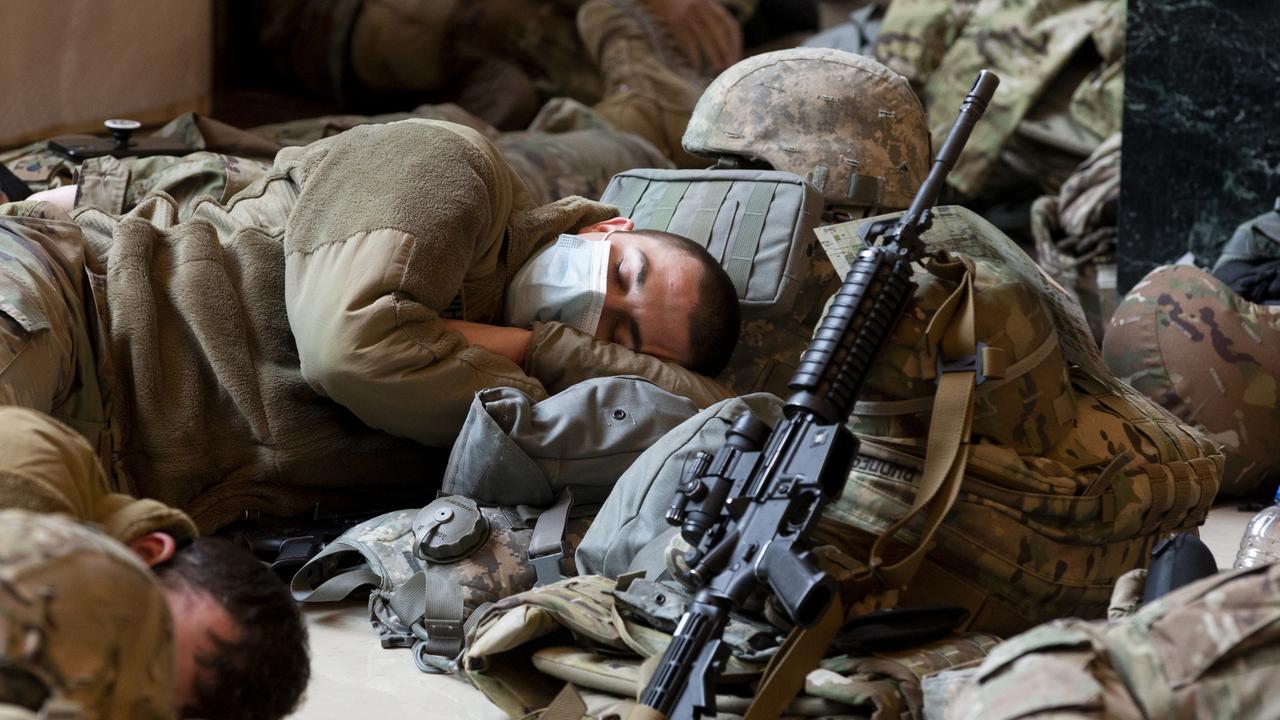
Roughly 1000 armed National Guard troops slept inside the Capitol overnight, all of them carrying weapons.
One of the guards told a Huffington Post reporter they politely declined sleeping in a cot because they were afraid they would “destroy the floors of one of the coolest buildings in the world.”
That reporter said the troops were sleeping in the “Capitol Visitor Center, Emancipation Hall, and surrounding hallways. They’re sleeping in reception areas, the cafeteria, the entrance to the building. Everywhere.”
There are at least a thousand, probably more, National Guard troops all over the Capitol Visitor Center, Emancipation Hall, and surrounding hallways. They’re sleeping in reception areas, the cafeteria, the entrance to the building. Everywhere. pic.twitter.com/EFvofT8fqx
— Igor Bobic (@igorbobic) January 13, 2021
The pictures have stirred up some anger, with many asking why the troops aren’t being given better provisions.
Fox reporter Lou Dobbs asked: “Where are the commanders of our troops in DC? Why don’t they have bedding, shelter, and provisions? This is outrageous, and their generals are derelict.”
The Virgina National Guard however, says the troops are only “resting” in the pictures and that they have somewhere else to sleep between shifts.
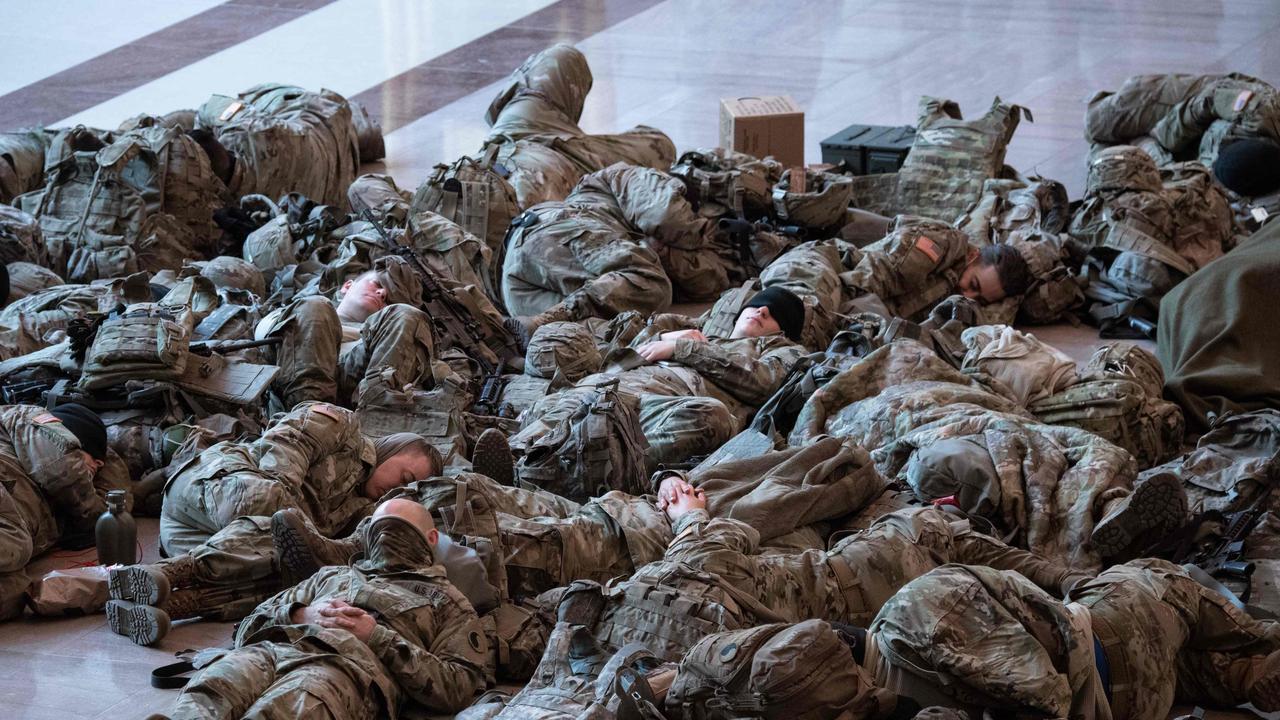
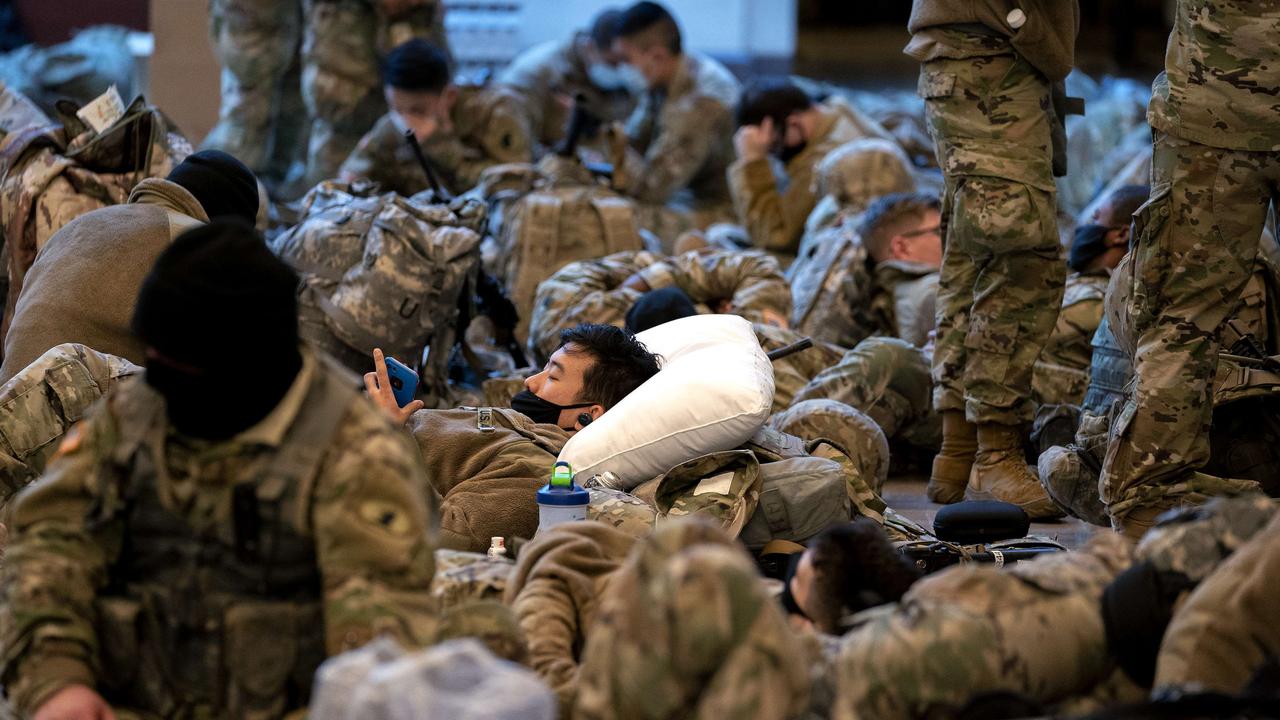
“Areas of the Capitol have been designated as rest areas for National Guard personnel when they are on duty but between shifts, and this is not where they are lodging when they are off duty,” they said in a statement. “Our security personnel work in shifts and rest when they can as others stand watch.”
Areas of the Capitol have been designated as rest areas for National Guard personnel when they are on duty but between shifts, and this is not where they are lodging when they are off duty. Our security personnel work in shifts and rest when they can as others stand watch.
In addition to the National Guard, members of D.C. police, the Secret Service, Capitol Police and state police agencies are also patrolling the area.
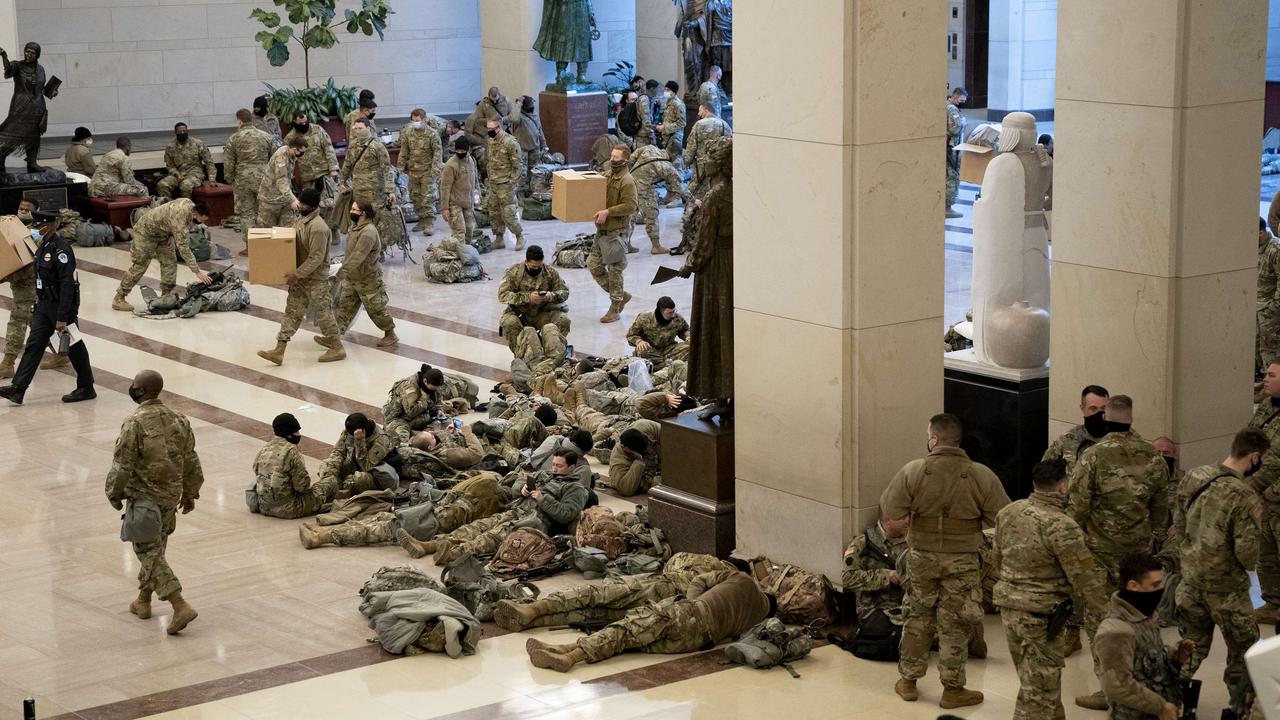
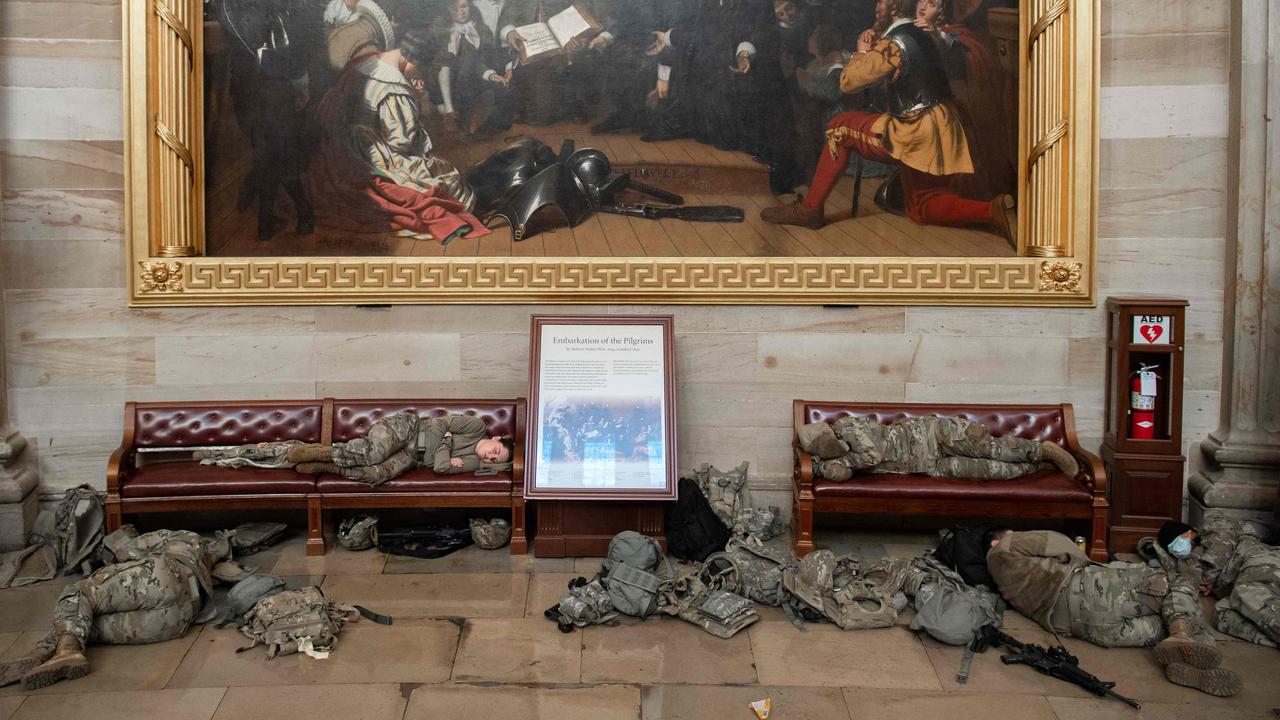
The building’s grounds are now ringed by a security fence erected after the attack, similar to the one put up around the White House months ago when protests erupted nationwide against police killings of African Americans.
Politicians are back in the building to decide whether to formally accuse the president of inciting the mob that stormed the Capitol last week in a failed effort to stop Congress from finalising Donald Trump’s November loss to Joe Biden.
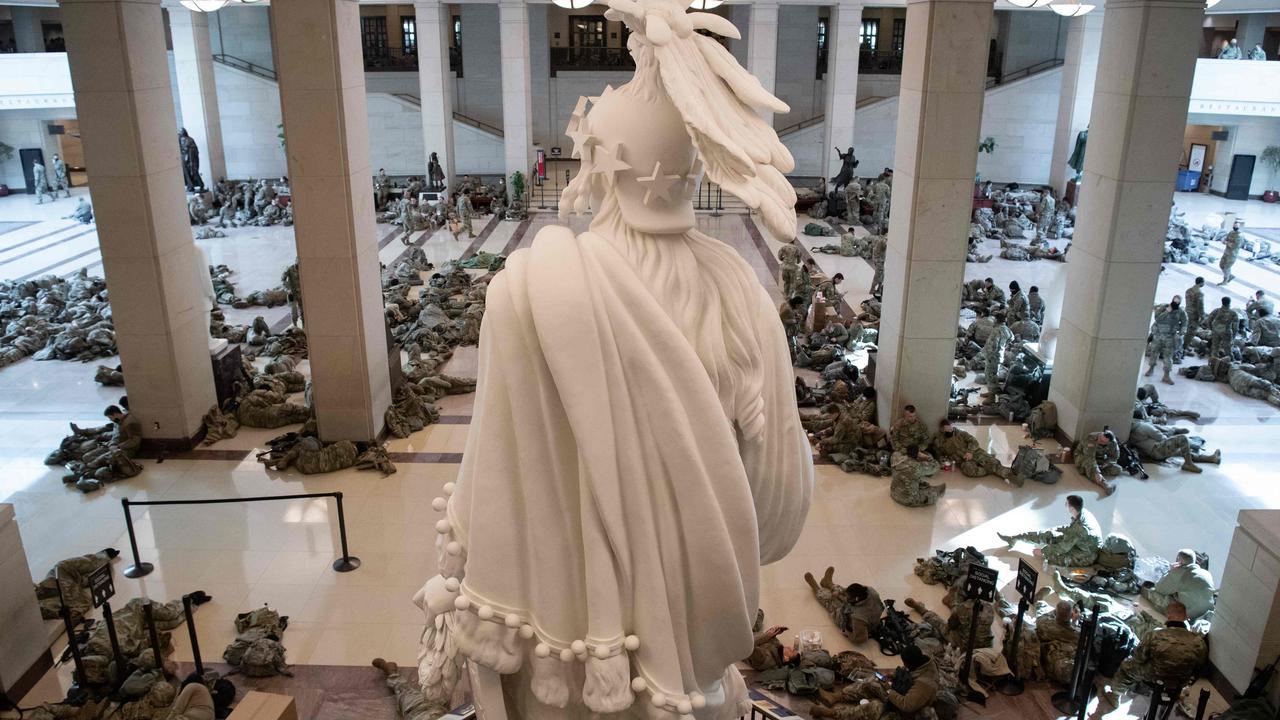
The capital of the United States, known for its historical monuments and crowds of tourists, has had a rough ride over the past 12 months.
Navigating the once humming downtown on foot, it is difficult to tell which buildings have been shuttered by the pandemic and which simply shut up shop due to the violent protests the city has been seeing.
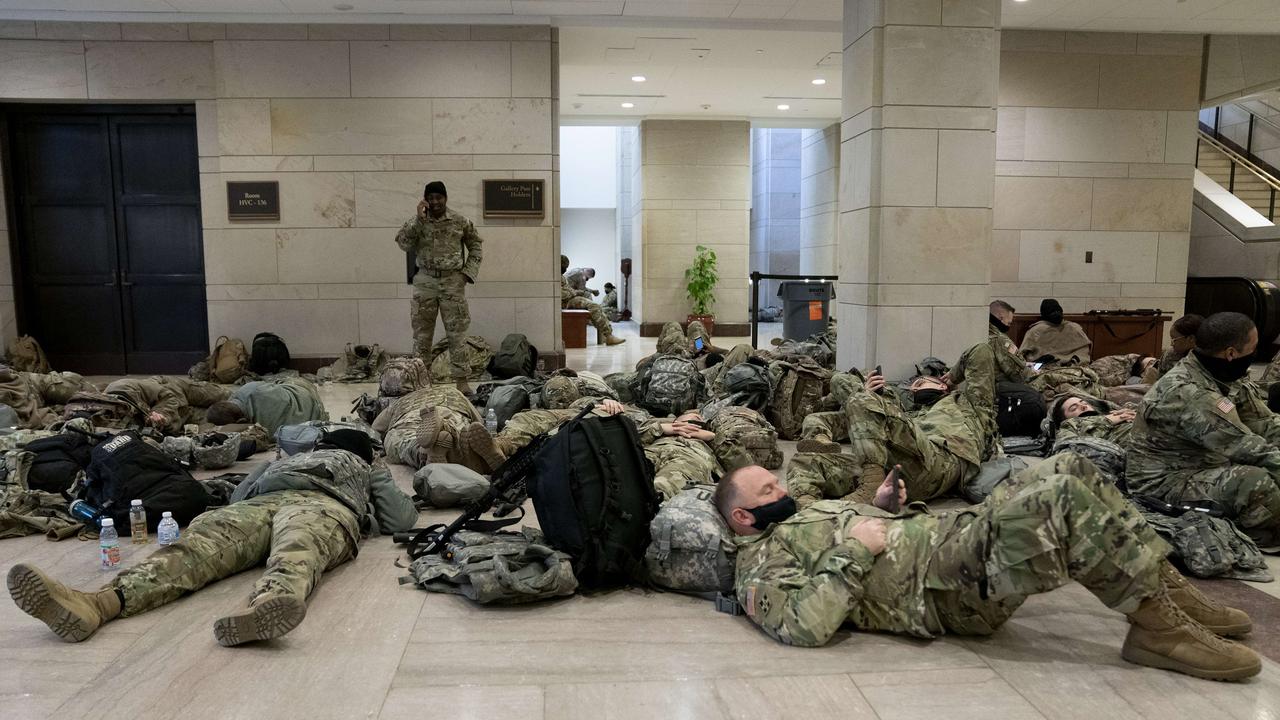
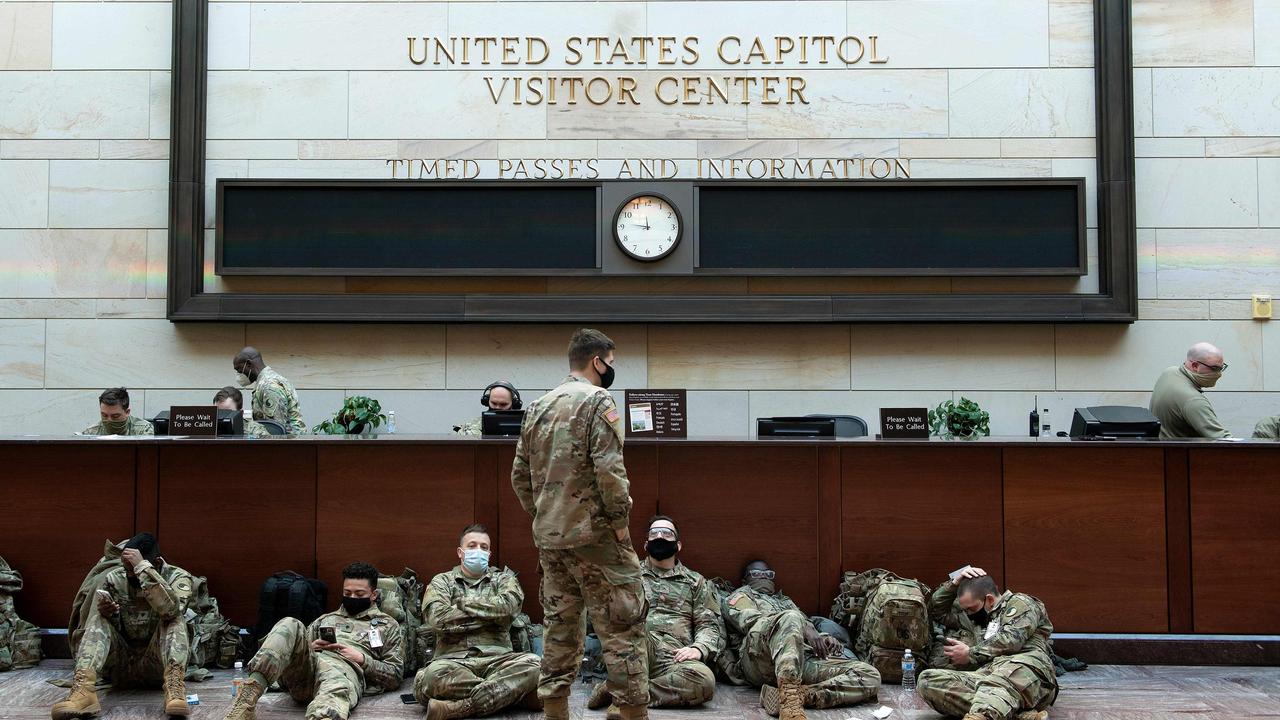
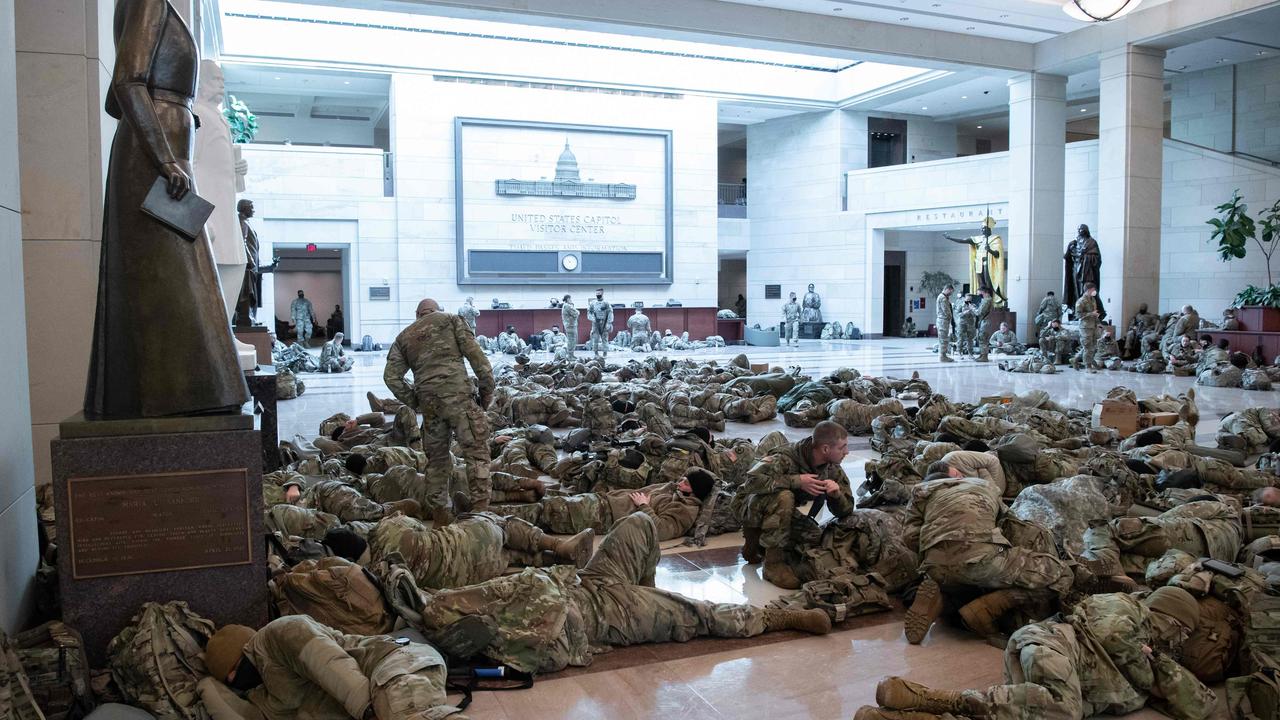
RELATED: Follow our live coverage of Donald Trump’s impeachment
“This is my first time (in downtown Washington) in a year. There’s usually people walking all over the place. This is very, very quiet. I almost think it’s like a ghost of itself,” said Jaime, a mother from Maryland who did not wish to give her full name.
Hordes of schoolchildren who normally travel from all over the country to visit museums and see the White House now stay away, as do most foreign tourists.
The hectic jostle of politicians, lobbyists and lawyers on the street has also fallen quiet, while the large metro stations that bring workers in from suburbs are quiet and little-used.
The city of more than 700,000 inhabitants is subdued, one week before the presidential inauguration of Joe Biden on the steps of the Capitol.
“The city is basically desolate,” said Nadine Seiler, 55, who has been demonstrating every day since the end of October near the White House in favour of anti-racist causes.
“Usually it’s very stressful, but here it’s like everybody’s away on vacation,” she added.
As in many Western cities, many workers have been signing in from home — especially staff at big institutions headquartered in Washington such as the World Bank and the IMF, as well as the countless government agencies.
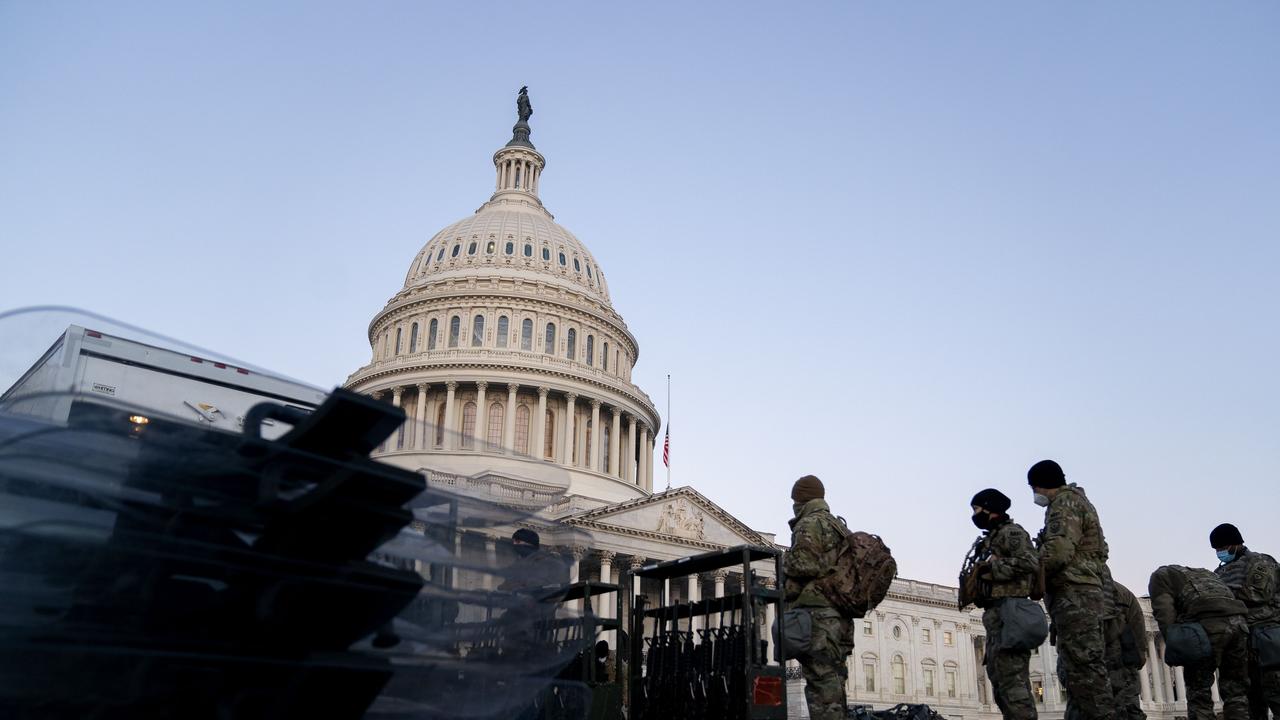
Eateries must try to survive by erecting tents and marquees along sidewalks, and tempting customers to sit down next to heaters of varying efficiency battling the winter cold.
“I went to the Christmas market … that’s gone, all that’s gone. You go into bars, (previously) packed bars — it’s gone,” laments Timothy Bartholomew, a resident of Arlington, just over the Potomac river.
According to the specialist site Eater, nearly 70 restaurants have permanently closed in Washington since the start of the pandemic, and many others are boarded up without any certainty they will ever reopen.
Violent protests and unrest have shaken Washington repeatedly in the last year. After the death of George Floyd at the hands of the police in Minneapolis in May, Washington became one of the hot spots of nationwide anti-racist demonstrations.
City authorities painted huge yellow letters reading “Black Lives Matter” across a wide street outside the White House, and the location became a popular site for rallies.
But over the months, clashes between anti-racist activists and pro-Trump protesters have brought an edge of tension to the city.
Roads and sidewalks have been gradually shut down around the White House, with the security cordon now holding people far back from Trump’s residence.
Police cars keep their flashing lights on at all times, and block streets normally streaming with traffic, while high metal fences surround many government buildings such as the US Treasury.
Crowds cheering the inauguration on January 20 will be thin on the ground, with authorities urging Americans to avoid the city, fearing more violence.



